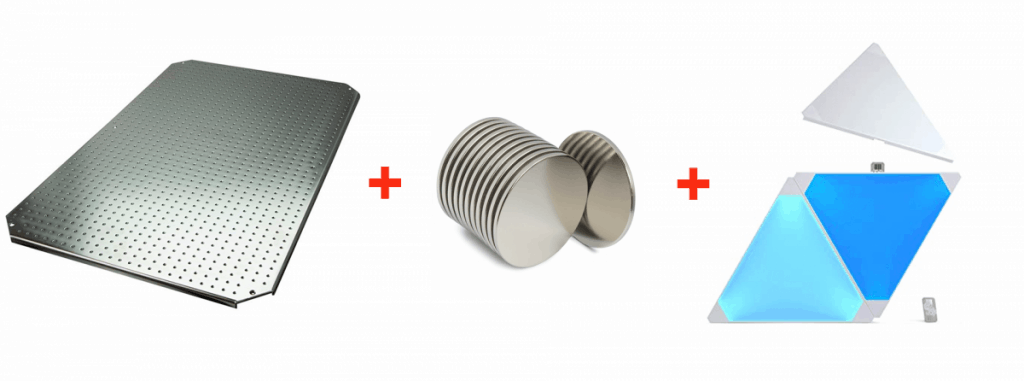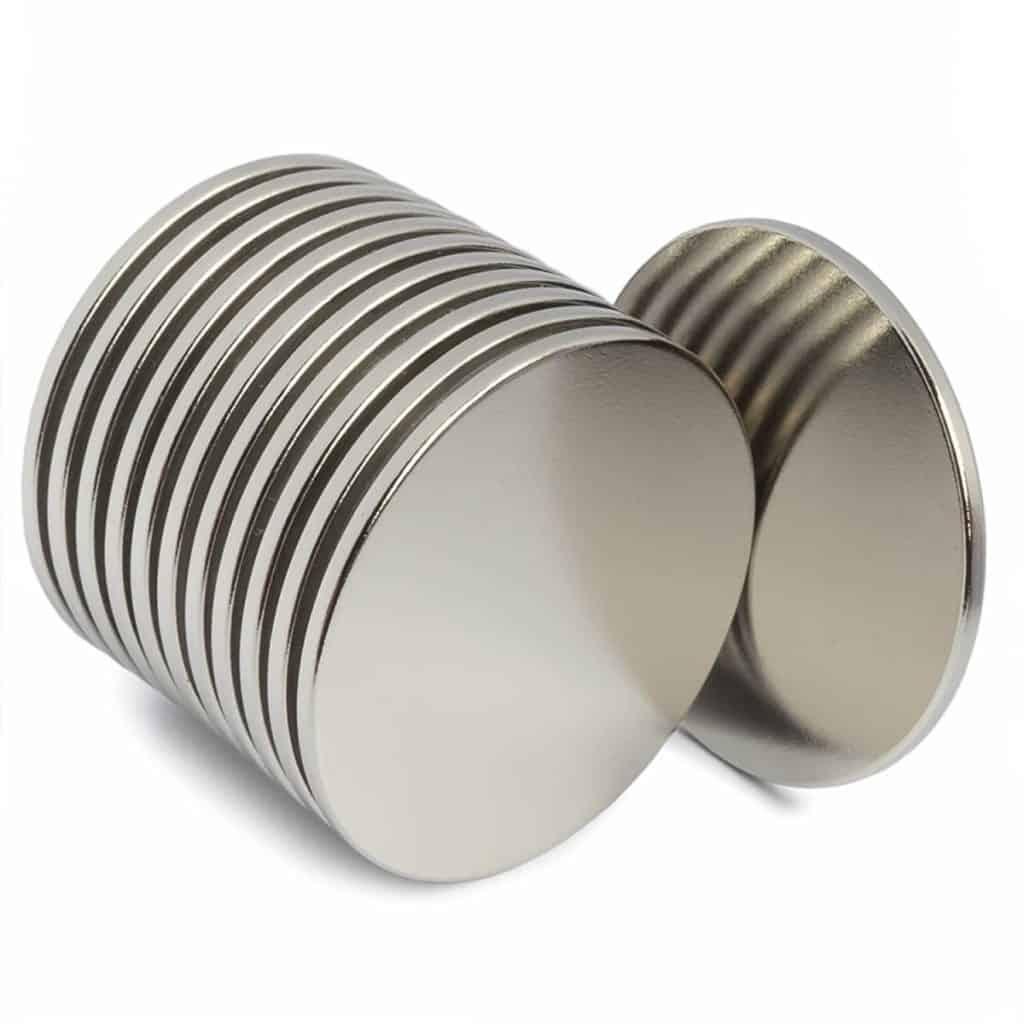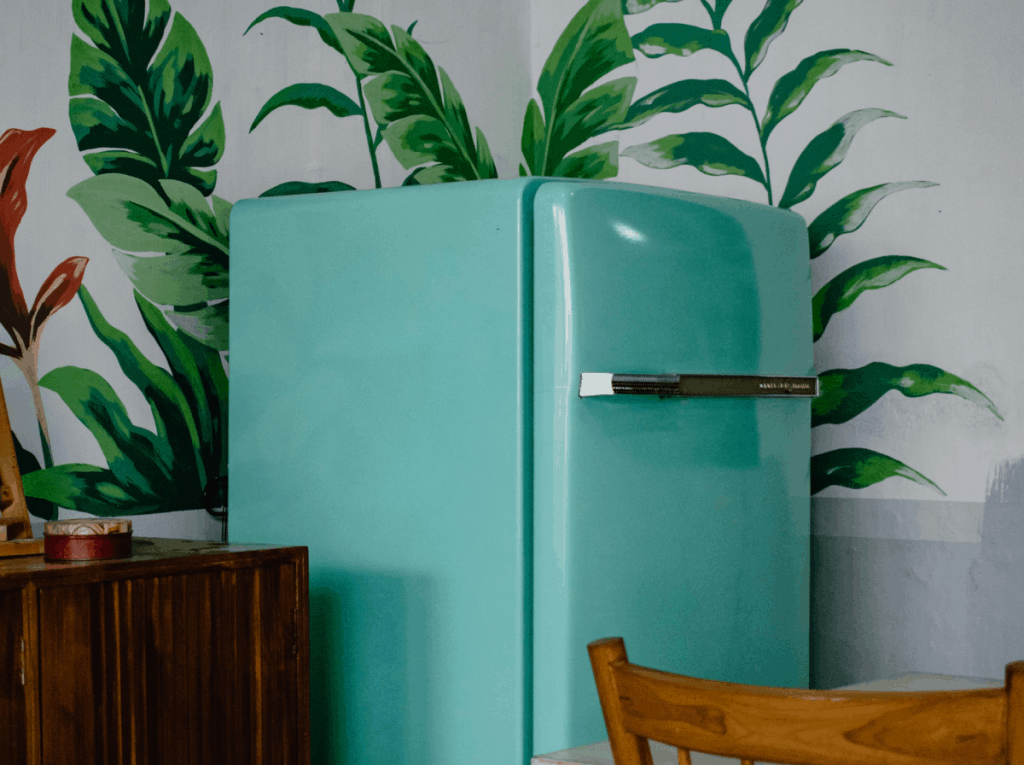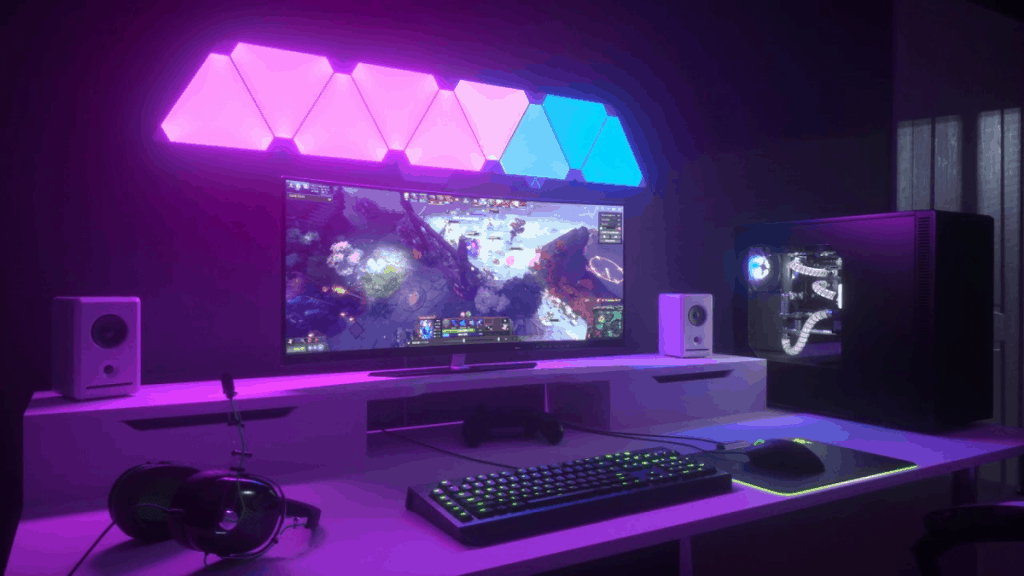Nano leaf panels are some of the most ingenious LED inventions available in the market. With Nanoleaf, you can plaster panels at walls that display amazing colors of light that can set up the room mood and ambiance. However, many users have desired to increase the flexibility of their Nanoleaf by having them mounted at surfaces such as refrigerator doors. Using magnets, you can have more mounting options for your Nanoleaf panels and quickly relocate them at your whim!
Can I Use Magnets to mount my Nanoleaf Panels? Yes. You can mount your Nanoleaf Light Panels on any metal surface using magnets. To mount them, plaster magnets on the edges and middle portion of the back panel using double sided tapes. The magnets do not have a negative effect on the Nanoleaf’s LED lights.
By the time you have read the article, you will learn that magnets are a good mounting option for your Nanoleaf Light Panels. Mounting the panels by the use of magnets allows you to firmly install it on a given surface. At the same time, you have the option of relocating it to any other magnetic surface easily without damaging the backside of the panels. Lastly, any worries you have over the effect of magnets on LED lights, such as Nanoleaf Light Panels, would be dispelled with clarity.
Magnets Can Help You Mount Your Nanoleaf Light Panels
It may sound outlandish, but magnets can be used to mount your Nanoleaf Light Panels. Using the magnets’ magnetic force, you can attach your light panels to any sturdy and firm flat surface. Since, it is mounted by way of magnets and not by screws or adhesives, you can easily remove the Nanoleaf light panel and relocate it if you want to. This gives you the ultimate flexibility in installing Nanoleaf light Panels.
Magnets generate enough attraction force to stick anything to a wall; it all just depends on the weight of the object. Nanoleaf light panels are surprisingly lightweight because they are mostly made up of synthetic materials such as plastic. A single panel could only weigh around 210 grams, which is well within the pull force of common magnets.

Quick Guide To Magnetic Mounts for Nanoleaf
The first thing you need to consider is the surface to which you will mount your Nanoleaf Light Panels. If you plan on installing Nanoleaf Light Panels on refrigerator doors, you do not need to make a bolted metal platform. On non-ferrous surfaces such as wooden walls, cement walls, or glass walls, a bolted metal platform will allow the Nanoleaf Light Panels to stick with the help of magnets.
To start, tape the side of the magnet that does not stick to any metal on the backside of your Nanoleaf Light Panels. With this, the magnetic side of the magnets are exposed and ready to be stuck on a metal sheet or platform. You may also use super glue to stick the non-magnetic side of the magnet to the panels.
Kind of Magnet to Use

Since we are using magnets to stick or mount your Nanoleaf light panels, we are going to need strong magnets that are specifically designed for household use. Do not use the magnets of your old stereos because those are round in shape. You will need a flat disc magnet, which allows you to firmly mount the panels without taking too much space.
You can buy Permanent Strong Disc Neodymium Magnets easily, either online or at your nearest hardware stores. A small disc of around 20mm in diameter is strong enough to carry 6kg. So each panel can be safely mounted on any metal or ferrous surface with just a single 20mm magnetic disc. Just to be sure, use two magnetic discs for each panel and double-check for even stronger magnets available in the market.
Pros of Using Magnets To Mount the Light Panels
The advantage of using magnets to mount your Nanoleaf Light Panels is flexibility. With the help of magnets, you can mount your Nanoleaf to almost any kind of flat surface. If you are planning to mount it on non-ferrous surfaces like glass or wood, you would only need to build a bolted platform made up of metal to make it work.
For metal surfaces, just stick the panel using magnets, and it’s already done. Aside from flexibility in choosing a variety of surfaces to stick the Nanoleaf Light Panels, you would also be enjoying flexibility in the sense that you can easily relocate your panels. With magnets sticking the panels on flat surfaces instead of screws or hooks, the mounting is firm and strong but not strictly permanent. Therefore, you can easily remove the mounted panels and place them somewhere else if you need to.
Another advantage of using magnets to mount Nanoleaf Light Panels is the fact that the backside of the panel does not get damaged through time. Since you are not using screws, adhesive tapes, or superglue all over the backside of the panel, you are, in a way, preserving your panels. You would only need to tape in 20mm magnets discs on the backside of the panel for it to be mounted using magnets.
Cons of Using Magnets To Mount the Light Panels
The disadvantage of using magnets to mount your Nanoleaf Light Panels is the logistics of installing it. Simply put, it would require a bit of knowledge and technical skills to pull this off. Of course, you could always hire a handyman to help you out, but that would mean additional expenses.
You will also need to be aware of basic geometry and physics, especially in the placement of the magnets. As a simple guide, always place two 20mm magnets discs on the edges each panel just to make sure it balances out. If you want to mount your panels on the ceiling, know that the force of gravity is stronger with lesser to no friction. In such a case, increase the number of magnetic discs and even them out on each corner.
If you’re interested in reading more about some of the more unusual capabilities of nanoleaf lights checkout some of the other houshia articles including:
- Nanoleaf Stuck On White – The Easy Fix
- Hue Lights and Nano Leaf – Step by Step Guide
- Are Nanoleaf Panels Worth It?
- Debunking the Light Panel Monopoly: Your Guide to Nanoleaf Alternatives
Magnets Will Not Damage Your Nanoleaf Light Panels
Do not worry about the magnets being close to the LED light of the panels. Magnets and magnetic fields do not affect LED lights. In a research conducted by scientists at Fermi Laboratory Research Facility, they have concluded that magnetic forces below 2.3T (Teslas) do not affect LED lights. The magnets we will be using (Neodymium magnets) are known as rare-earth magnets, which typically exert magnetic forces between 1 to 1.4 T (Teslas).
Since the magnetic force exerted by these magnets do not reach the 2.3T threshold, we can safely say that your Nanoleaf Light Panels will not be damaged. The magnets we will be using are strong enough to firmly hold the panels on any metallic surface, but not strong enough to damage the LED lights. Do exercise caution in using Neodymium magnets or any rare-earth magnets for that matter as they can injure you if you happen to get pinched by two magnets.
Best Magnet Mounting Ideas
Refrigerator Doors

Refrigerator doors are the usual surfaces that can be mounted with Nanoleaf Light Panels using magnets. Without magnets, it would be unwise to mount the light panels on a refrigerator door because it will damage both the door and the panels. Many homeowners have used magnets to mount light panels into refrigerator doors because of the lighting aesthetics it provides to the kitchen.
Since refrigerator doors are made up mostly of steel, the magnets will strongly attract and stick to it. You will not need platforms to facilitate the mounting. All you have to do is make sure the magnets are firmly taped to the light panels, and you’re good to go.
Computer Sets

Computer Sets and Nanoleaf Light Panels can be a great combination. Nowadays, computer sets are incomplete without LED lights lifting the ambiance and gaming experience. Nanoleaf will surely match your PCs, especially with its rhythm lights.
You may install the light panels on the walls near the PC sets. Some have even mounted a few panels on the desktop itself. The choice is entirely up to you, which is why magnetic mounts are very flexible.
Metal Platforms For The Nanoleaf Light Panels

For non-ferrous surfaces, which are surfaces that do not attract magnets, you can still mount your Nanoleaf Light Panels using magnets. You will need to make a metallic platform first for you to have something to stick your magnets to. So wooden doors would need a metal platform because wood is not a ferrous material.
Aluminum is a non-ferrous alloy, which means magnets will not be attracted to it.
Simply put, you cannot mount the light panels on aluminum surfaces using magnets.
If you really want to mount your Nanoleaf over an aluminum surface, you would need to make a metal platform over the aluminum.
Cold Rolled steels are the best materials to use in mounting Nanoleaf light panels using magnets. This type of alloy will strongly attract any kind of magnet, which makes them the perfect mounting surface. They are also known to have very smooth and even surfaces.
Conclusion
To summarize things up, using magnets to mount your Nanoleaf Light Panels is not only a feasible idea but also a very effective one. It gives you so much flexibility that you can have your light panels installed from one place to another without damage or deterioration to the panels itself. Surfaces, where a light panel is used to be magnetically mounted, appear cleaner than places where a light panel is mounted with adhesives or glues.
hope you enjoyed reading this article, if you found it useful then share it with other people who might be interested in learning more about nanoleaf panels!
Steve
P.S.
I listed these additional articles earlier in the article. If you’re interested in reading more about some of the more unusual capabilities of nanoleaf lights checkout some of the other houshia articles including:
- Nanoleaf Stuck On White – The Easy Fix
- Hue Lights and Nano Leaf – Step by Step Guide
- Are Nanoleaf Panels Worth It?
- Debunking the Light Panel Monopoly: Your Guide to Nanoleaf Alternatives
Reference(s):

